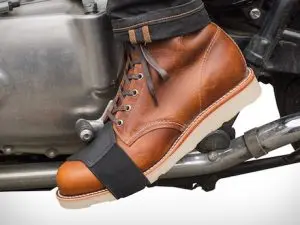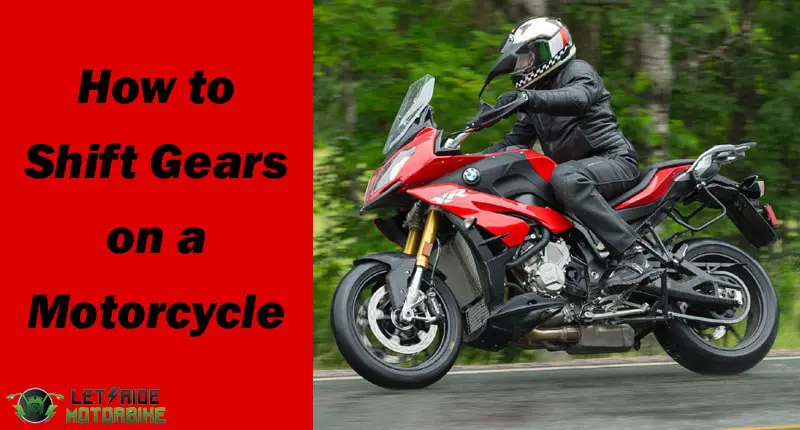The act of shifting gears on a motorcycle is an integral part of riding. Whether you’re new to motorcycling or have been riding for years, there can be times when it feels like you’re stuck in one gear and not getting anywhere. We’ll help you find the perfect gear to get moving again!
This blog post will teach you how to shift gears on a motorcycle by going over some essential tips that every rider should know. With this information at your fingertips, shifting gears won’t feel intimidating anymore!
The Best Time to Shift Gears
When riding a bike, you will notice that it will quickly reach a point of peak torque. Peak torque is when the engine provides the highest amount of power, usually between 75 and 90% of the revs (rpm). You would reach peak revs, and the bike would stop accelerating if you didn’t change gear and continued to accelerate. Hence, to accelerate further, you will need to select the next higher gear. If you are braking at a traffic light, intersection, or roundabout, for example, you can change down the gear so you will be prepared to accelerate away when you arrive at the destination.
6 Easy Steps to Shift Gears on a Motorcycle

When learning to ride a motorcycle, changing gears is one of the most important aspects. You’ll master this skill during part of your CBT day when you book your CBT. Practicing changing gears should become a fluid motion that allows you to keep your eye on the road while staying safe, as you can adjust the gears without even thinking about it.
Step-1
Spend some time getting familiar with how your clutch, throttle, and gear shifter work. In front of the left foot pedal is a shaft that is used to shift gears. The clutch is located in front of the left-handleft-hand grip. On the right handgrip is the throttle.
Step-2
Before you try the real thing, practice controlling the clutch and shifting gears. The steps can be completed while skipping step 3, where the machine is actually turned on!
Step-3
Squeeze the clutch and press the starter button on the right handlebar to start the motorcycle. Your position should be neutral. If the bike is neutral, there is usually a green “N” light on top of the tank or display. However, if you are unsure, then release the clutch with caution. The bike will lurch forward while in gear. By releasing the clutch and applying the throttle while the bike is neutral, the bike will not move.
Step-4
Press down on the gear shifter after pulling in the clutch lever. The gear shifter should “click” into first when you select it.
- It would be time to shift down into first gear if the motorcycle is in neutral or second gear. Putting your foot down on the gear shifter will take you to the second, third, fourth, and fifth gears.
Step-5
Slowly remove the clutch after shifting into first gear. To prevent the motorcycle from jumping forward, you need to let out the clutch slowly. Pull back with your right hand and slowly let go of the clutch while ease the throttle (this is called “rolling on”). When you pull back, you go faster – so take care at first! Then, roll the throttle toward the front of the motorcycle to slow down.
Step-6
Your bike will need to change gears as you ride faster. To enter the second, third, fourth, and fifth gears, repeat Step 4, moving your foot under the gear shifter.
- The gears will click back down when you shift down again. In general, one gear down and five (or six) up is considered standard. The neutral position is found between the first and second gears.
It will become automatic with some practice. Once you become familiar with your machine and have logged some miles, keeping track of which gear you are in will be simple.
You may not even need to use the clutch as you become more experienced. Many motorcycle racing riders use clutchless shifting techniques to save time and provide smoother gear changes. If you’re just starting out, you should work on your clutch control and switching gears
Quick Tips for a Smooth Shift:
- The left hand can squeeze the clutch lever to disengage.
- Make use of the gearshift lever to choose the appropriate gear.
- Using your right wrist, twist the throttle in a slight upward motion (starting with a flat wrist).
- As you let go of the clutch lever, release it gradually with your left hand. It is important to use gentle force when you are accelerating your motorcycle. If you pop the throttle, it might be too much, and the motorcycle could jump.
- As your engine speed catches up with your ground speed, release your clutch fully. Shift into another gear by repeating the process.
Motorcycle gear changing tips
- When in neutral (i.e., no gear), the input must be direct and can only go up or back down in the gearbox, so be careful not to catch neutral.
- The clutch lever does not have to be pulled straight out, so you can change gears as often as you like, as long as the revs match.
- When you accelerate continuously, you won’t need first gear for long if you’re in high gear
- In general, a bike with a low capacity should be run in 1st gear up to 10 mph and 2nd gear up to 20 mph.
- In modern gearboxes, it is okay if you miss a gear.
- Be sure the motorcycle boot’s top is the correct size when purchasing. Under your gear lever, does it fit nicely? Feeling the lever is essential.
- Fast shifting gears occur without a clutch by using quick shifters on modern bikes.
Warnings
- Listen to your engine when you accelerate. You should slow down if the noise is very loud. If you hear a high pitch, speed up.
- Do not make more than one shift at a time when you slow down.
- To ensure that you are actually in neutral when shifting from first gear, release the clutch gradually. The bike will likely stall (at best) or suddenly jump forward if the clutch is released quickly while it is still running.
- It is possible that the engine could explode over time if you do not increase the speed as soon as the rev limiter is reached.
- You may need to experiment with injector settings if the gears seem to “click”.
FAQ
- Can I start my motorcycle in 2nd gear?
It is possible, but it will wear down your clutch faster. Many motorcycles have a first gear that is higher than other gears. It can be hard to start the motorcycle from second gear because you can slip the clutch.
- What speed should you shift gears on a motorcycle?
RPMs between 5,000 – 7,000.
For most bikes, shifting between 5,000 -7,000 RPMs is just about right. However, you should also listen to the engine and feel it for yourself. Its pitch will increase the faster you move. A high pitch signifies that it’s time to shift. It will be easy to learn when you shift too soon since the engine will struggle when you shift too early.
- Why is 1st gear down on a motorcycle?
If you stop your motorcycle, you need to put it in neutral. This eliminates the possibility of accidentally selecting neutral while riding or selecting 1st gear while pulling away. It is easier to find first gear when first gear is placed at the bottom.
- Is clutchless shifting a bad motorcycle?
Many clutchless motorcycles shift fine, but some don’t. Heavy flywheels or gearboxes with wide ratios don’t like the clutchless idea, so don’t be offended if you have a difficult time. Your shifting varies depending on what bike you are riding and at what revs you are shifting.
- Can you skip gears on a motorcycle?
A motorcycle allows you to skip gears. Downshifting and upshifting can be done safely while skipping multiple gears. The engine, wheels, and gearing of a motorcycle must all be matched in order to be able to skip gears without putting the rider in danger.
Conclusion
To shift gears, you will need to use the clutch lever. When it is time for a gear change, pull back on the clutch lever with your left hand while depressing and releasing the throttle with your right hand. This should bring up a new gear level quickly enough that there’s no sudden jerk of power from one engine speed to another, which can be dangerous if not done properly. We hope this blog post will help you understand the basics of how to shift gears on your motorbike. Remember these steps when changing speeds as needed and enjoy riding!

